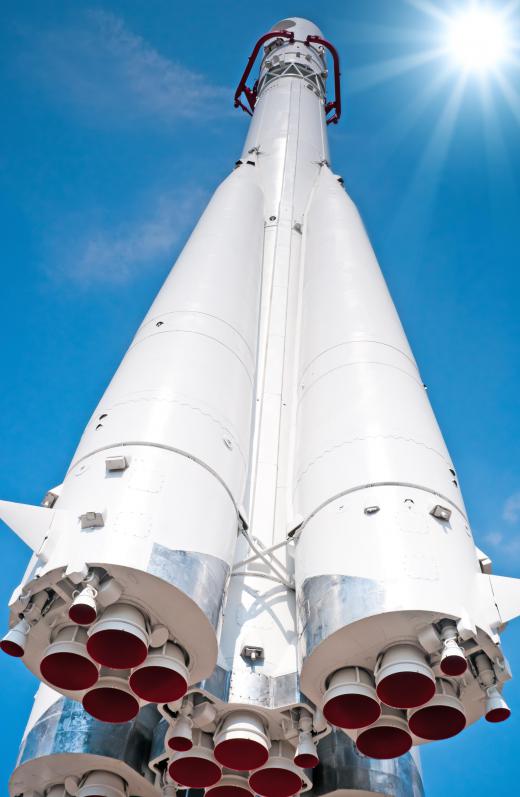What is Cryogenic Freezing?
 Mary McMahon
Mary McMahon
Cryogenic freezing is a type of freezing which requires extremely low temperatures, generally below -238 Fahrenheit (-150 Celsius). This process is part of a branch of the sciences known as cryogenics, which focuses on the production of very cold temperatures and the study of what happens to objects subjected to these temperatures. Research in this field ranges from basic studies on severe cold to applied research in which cryogenics is applied to various issues confronted by humans.
Just generating the extremely cold temperatures required for cryogenic freezing requires a lot of work. It's not as simple as turning up the refrigerator, because refrigeration components can only get so cold. Typically, it relies on the use of liquified gases such as helium. These gases can only exist in a liquid state at extremely cold temperatures, which means that once the gas is in liquid form, it can be used to generate freezing temperatures.

Cryogenic freezing is utilized to temper high-end metal products and certain other industrial products. The use of cryogenics appears to improve the strength and performance of such products, and it can be used for tasks which vary from creating extra-strong knives to making baseball bats. Cryogenics is also utilized in the lab environment to create cold temperature for various experiments, and cryogenic freezing is one method for producing specialized fuels like rocket fuel.

The food industry utilizes this method to flash freeze fresh foods so that their nutrients and texture will be largely preserved. Flash freezing can be seen in use everyone from fishing boats to plants which prepare TV dinners. In the medical profession, cryogenic freezing is used to preserve vaccines so that they will remain stable and viable for administration. Once frozen at such low temperatures, objects can remain frozen with the use of special refrigeration units, including mobile units with liquefied gases which permit cryogenically frozen objects to be shipped.

People sometimes confuse cryogenic freezing with cryonics, the field of preserving human bodies in freezing conditions with the goal of reviving them at some point in the future. Cryonics relies on the idea that advances in the sciences are constantly occurring, and that while it may not be currently possible to bring someone back from the dead, this could happen in the future, so people who want another chance at life may opt for cryonic preservation so that their bodies will be available for reanimation.
AS FEATURED ON:
AS FEATURED ON:













Discussion Comments
@Chmander - Yep, that's pretty much what happens to someone when they're in suspended animation. You're still living, it's just that your body processes have slowed down quite a bit. Also, this is just my opinion, but I find the entire process to be very fascinating. It leaves researchers and scientists with a lot of room for potential in experimental areas, as the article even states.
As an example, let's say that a lab worker injected an animal with a toxin that they knew would kill it. After the injection, they could easily freeze the animal and put them in a "suspended animation". Though the toxin would kill them initially, freezing the animal would preserve the body so that it wouldn't rot away. As you can see, there are several advantages to the use of cryonics.
@BambooForest - I agree with you about the aspects of suspended animation. In fact, I too find it to be a very disturbing concept. Just to clarify though, and just so I'm not too confused, let me get everything straight. So when someone is in suspended animation, that means even though they're frozen, they're technically still "alive"? That's what I find to be the most alarming.
I have been studying cryogenics at my school because we have a science fair going on and I would like to know more about it.
I have confused the idea of cryogenics and cryonics as well, but I think it is because the suspended animation idea behind cryonics does utilize the deep freeze concepts of cryogenics.
I always thought cryonics was terrifying idea, though, because what if something happens to your body? There could be a natural disaster or even, as has happened before, something so simple as a power outage or pulled plug at the freezing facility. Even if it is possible to unfreeze people later, it seems too risky to me.
I am interested to know the prices and terms of cryonics process and when are you frozen? I would like some input and its excellent for us who believe that science is always advancing. This renews my faith in the science community.
Post your comments